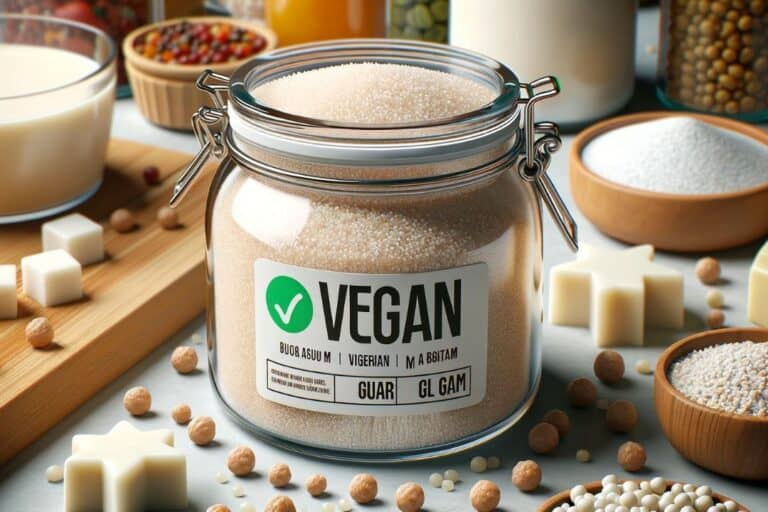How Long Does Queso Last in the Fridge After Opening
Queso, a beloved cheese dip, is a staple in many Mexican dishes and has found its way into the hearts of many in the United States. Whether it’s the spicy Tostitos queso dip T you’ve gotten from the grocery store.
For the homemade queso fresco you tried making for the first time or that side of queso from your favorite Mexican restaurant, it’s important to know how long does queso last in the fridge.
There are various types of cheese used in making queso. Some popular choices are Queso Blanco, Monterey jack cheese, white American cheese, and cheddar cheese. Each type of cheese has its unique shelf life and storage requirements.
Homemade queso fresco, meaning “fresh cheese,” is traditionally made from cow’s milk. This cheese has a tangy flavor and a high moisture content, giving it a limited shelf life. For the best results, it’s a good idea to consume homemade queso fresco within 3-4 days when stored in the fridge.

However, due to its manufacturing process, store-bought queso fresco can last longer, typically 3-5 days after opening, if kept in its original packaging.
Melted cheese dips have a different time frame, like those you might get with nacho cheese or from a jar like Tostitos salsa con queso. Store-bought cheese dip, when kept in a covered container, usually remains fresh for 3-5 days.
On the other hand, if you’ve whipped up a homemade dip with ingredients like sour cream, lemon juice, garlic powder, or even a bit of pepper jack for that extra kick, it’s best consumed within the same time frame to ensure the best flavor.
There are a few signs that your queso or cheese dip has gone bad. If you notice a sour taste, slimy texture, or green spots, it’s best to toss it. These are clear indicators that the cheese has spoiled.
For those who buy or make queso in bulk, the good news is that queso can be frozen for later use. For the best way to freeze, divide the queso into smaller portions. Use parchment or wax paper to separate the portions, and then place them in a freezer bag or a plastic container.
Ensure that all air is removed to prevent freezer burn. Always remember to label with a storage date.

Interestingly, queso fresco made from raw milk has a slightly different taste, is often described as more tangy, and might have a shorter shelf life due to its high moisture content. It’s always a good idea to store it in a dark place in the fridge, away from items that might transfer flavors.
In conclusion, while the various cheeses and dips might have slightly different storage recommendations, the general rule remains: consume fresh queso within a few days for the best flavor, and always look for signs of spoilage.
Enjoying the store-bought Tostitos queso or your homemade Monterey Jack and cheddar cheese dip quickly ensures you get the most out of its tangy and delightful flavor.
How long does queso last in the fridge after opening?
If you’re a queso fan, you may wonder how long this delicious cheese dip made with milk can last in the refrigerator once it’s been opened. While there isn’t a one-size-fits-all step to making queso fresco with milk, there are some general guidelines to remember.
Average shelf life of opened queso in the refrigerator
The average shelf life of opened queso in the refrigerator is typically around 5 to 7 days, depending on the milk content and storage conditions. However, it’s important to note that the freshness of queso fresco can vary depending on factors such as the specific ingredients used and any preservatives added during production.
This step is crucial in ensuring the quality of the cheese. Some store-bought queso may have a longer shelf life due to these preservatives, so be sure to check the label for more information on this step.
Variations based on different ingredients and preservatives
As mentioned earlier, the step shelf life of queso can vary based on its ingredients and preservatives. For example, if your queso contains fresh dairy products like milk or cream, it may spoil faster than versions made with processed cheeses or artificial ingredients. This is a crucial step to consider when making queso.
This is a critical step to consider when making queso. Certain preservatives can help extend the lifespan of queso by inhibiting bacterial growth. This step is crucial for maintaining the freshness and quality of the cheese. This step is essential for maintaining the freshness and quality of the cheese.
When making queso fresco, it’s necessary to carefully read the ingredient list and check for any additives that could affect its longevity. This step is always recommended to ensure the quality of the queso fresco.
Impact of proper storage techniques on extending its lifespan
Proper storage techniques play a crucial role in extending the lifespan of opened queso. To maximize its freshness, transfer any leftover queso into an airtight container before placing it in the refrigerator.
This helps prevent exposure to air and moisture, which can accelerate the spoilage of queso fresco. Storing queso fresco at temperatures below 40°F (4°C) is recommended as colder temperatures slow bacterial growth.
The importance of checking for signs of spoilage
Even with proper storage techniques, checking for signs of spoilage before consuming queso is essential. Pay attention to any changes in color, texture, or smell.
If the queso develops a sour odor, mold growth, or an off-putting appearance, it’s best to err on caution and discard it. Consuming spoiled queso can lead to foodborne illnesses and unpleasant experiences.
Tips to Extend the Shelf Life of Queso in the Fridge
Storing queso at a consistent temperature below 40°F (4°C)
To ensure that your queso stays fresh for as long as possible, it is essential to refrigerate it at a constant temperature below 40°F (4°C).
The cold temperature helps slow down bacterial growth and prevents spoilage. Ideally, storing your queso on one of the refrigerator shelves rather than in the door would be best, as temperatures can fluctuate more.
Using airtight containers or resealable packaging for storing leftovers
When refrigerating leftover queso, transferring it into an airtight container or using its original resealable packaging is crucial. This step helps prevent air and moisture from coming into contact with the queso, which can cause it to spoil faster.
Airtight containers also prevent odors from other foods in your fridge from permeating into the queso.
Here are some examples of suitable containers:
- Glass jars with tight-fitting lids
- Plastic containers with snap-on lids
- Ziplock bags designed for food storage
Using these containers creates a barrier against external elements that can negatively impact the quality and shelf life of your queso.
Avoiding cross-contamination by using clean utensils while serving
When enjoying your queso, always use clean utensils to avoid cross-contamination. Bacteria from dirty utensils can transfer onto the cheese dip and promote spoilage.
Don’t double-dip or introduce foreign objects if you plan to serve your queso directly from its original container.
Remember to wash utensils thoroughly before each use and keep them separate from other dishes during storage.
Minimizing exposure to air and moisture
Exposure to air and moisture is one of the main culprits behind the quick deterioration of queso. To extend its shelf life, minimize its exposure to these elements as much as possible.
Here are a few strategies to follow:
- After each use, the container or packaging must be sealed tightly.
- Remove the desired queso from the container and promptly return the rest to the fridge.
- Avoid leaving queso uncovered for extended periods while serving or preparing other foods.
By taking these precautions, you can help preserve the freshness and taste of your queso for more extended periods.
Detecting spoilage: signs that store-bought queso has gone bad
Unpleasant odor or sour smell

A strong, unpleasant odor or sour smell is one of the first signs that your store-bought queso may have gone wrong. When you open the container and are greeted with an intense aroma not characteristic of fresh cheese, it’s time to be cautious.
The smell could indicate bacterial growth or the presence of other harmful microorganisms. Trust your nose; if the scent is off-putting, it’s best to err on caution and discard the queso.
Mold growth or visible discoloration
Another obvious sign that your queso has spoiled is mold growth or visible discoloration. If you notice any fuzzy green, blue, or white spots on the surface or throughout the cheese, it indicates that mold has taken hold.
Mold can produce harmful toxins when consumed, so it’s crucial not to drink any queso showing signs of mold growth.
Separation or curdling texture
When good queso goes wrong, you might notice a change in its texture. If your once smooth and creamy dip now appears lumpy and curdled, it’s a telltale sign that something is amiss.
Separation occurs when water separates from fats and proteins in the cheese due to spoilage. This separation can result in an unappetizing appearance and an undesirable mouthfeel.
Off-taste or unusual flavor
Taste is often one of our most reliable senses when determining food quality. If your queso tastes off or has developed an unusual flavor, it’s likely an indication that spoilage has occurred.
Depending on the extent of bacterial activity within the cheese, the flavors may range from bitter to rancid. Trust your taste buds; if something seems off about the flavor, it’s best to avoid consuming it.
Detecting spoilage in store-bought queso is crucial to ensure food safety and prevent potential health risks. Remember the signs to look out for unpleasant odor or sour smell, mold growth or visible discoloration, separation or curdling texture, and off taste or unusual flavor.
When any of these signs are present, it’s best to discard the queso rather than risk consuming spoiled food.
By understanding these signs, you can confidently assess the quality of your leftover queso and make informed decisions about whether it’s safe to consume. Always prioritize your health and well-being by staying vigilant.
Can you eat store-bought queso after the expiration date?

Many people wonder if it is safe to consume after the expiration date. Evaluating safety based on “best by” vs……. “use by” dates is crucial in determining whether or not it is still suitable for consumption.
Understanding “Best By” vs. “Use By” Dates
Store-bought queso often has a “best by” or a “use by” date printed on the packaging. These dates are guidelines for consumers to ensure optimal quality and taste. While they are not strict indicators of safety, they can give you an idea of how long the product will maintain its freshness.
- Best By Date: This date suggests when the product may start to lose its flavor and quality but does not necessarily mean it becomes unsafe to eat.
- Use By Date indicates when the product should be consumed for peak freshness and safety.
Factors to Consider Before Consuming Expired Store-Bought Queso
Before deciding whether to consume expired store-bought queso, there are several factors you should consider:
- Storage Conditions: Proper storage plays a significant role in extending the shelf life of queso. If your queso has been consistently stored at a cool temperature below 40°F (4°C) in the refrigerator, it will likely remain safe even after the expiration date.
- Appearance and Smell: Scrutinize your queso before consuming it. If you notice any mold growth, discoloration, or an off-putting odor, it is best to discard it immediately.
- Sensitivity to Foodborne Illnesses: Individuals with compromised immune systems or underlying health conditions should exercise extra caution when consuming expired foods, including store-bought queso. The risk of foodborne illnesses increases in these cases.
The Importance of Food Safety

Food safety should always be a top priority when consuming expired store-bought queso. While some people may have consumed expired products without experiencing any adverse effects, it is essential to understand the potential risks involved.
Consuming expired queso can lead to food poisoning and other gastrointestinal issues.
It is worth noting that specific pathogens, such as Listeria monocytogenes, can grow in refrigerated foods even at low temperatures. These bacteria can cause severe illness, especially in vulnerable individuals.
Therefore, it is crucial to exercise caution and prioritize your health when deciding to consume expired queso or any other food product.
Exploring different types of queso and their shelf life
There are a variety of options available in the market. Each style has unique characteristics and shelf life, from fresh homemade versions to processed or store-bought varieties.
Fresh homemade queso vs. processed/store-bought varieties
Fresh homemade queso is famous for those who prefer a more authentic and customizable experience. Made with real cheese and other ingredients, this queso offers a rich flavor that is hard to beat.
However, due to its lack of preservatives, it tends to have a shorter shelf life than processed or store-bought variants.
On the other hand, processed or store-bought queso often contains additional additives and preservatives that extend its shelf life. These products are designed for convenience and can be easily stored in the fridge for extended periods.
While they may not offer the same freshness as homemade queso, they still provide a tasty option for quick snacking or entertaining guests.
Soft cheeses like cream cheese vs. hard cheeses like cheddar
There is also a distinction between soft cheeses like cream cheese and hard cheeses like cheddar. Soft cheese-based quesos have a shorter shelf life due to their higher moisture content. Creamy textures make them susceptible to spoilage if not correctly stored.
Hard cheese-based quesos, on the other hand, have lower moisture content, which helps prolong their shelf life. Varieties like cheddar or Monterey Jack can last longer in the fridge without compromising taste or quality.
Queso fresco, cotija, and other traditional Mexican varieties
Traditional Mexican varieties of queso bring unique flavors and textures to any dish. Queso fresco, cotija, and similar variants are often made from fresh milk and have a crumbly texture that adds a delightful touch to Mexican cuisine.
These types of queso usually have shorter shelf life than processed or store-bought options.
It is essential to follow proper storage guidelines to ensure the longevity of traditional Mexican queso. Keeping it tightly wrapped in plastic wrap or an airtight container will help maintain its freshness for as long as possible.
Vegan or lactose-free alternatives
For those with dietary restrictions or preferences, vegan or lactose-free queso alternatives offer a great option. Made from plant-based ingredients such as nuts, seeds, or vegetables, these variants provide a dairy-free alternative without compromising taste.
The shelf life of vegan or lactose-free queso can vary depending on the product and ingredients used. It is recommended to check the label for any storage instructions the manufacturer provides.
Why does canned/store-bought queso last longer?
Canned or store-bought queso has a longer shelf life than homemade versions due to several factors contributing to its preservation and freshness. Let’s delve into the reasons behind the extended lifespan of these convenient options.
Sterilization and canning processes for extended shelf life
One of the primary reasons why canned or store-bought queso lasts longer is the sterilization and canning processes involved in its production.
Manufacturers subject the queso to high heat during canning, effectively killing any bacteria or microorganisms present. This process helps prevent spoilage and extends the product’s shelf life significantly.
Addition of preservatives to inhibit bacterial growth
Manufacturers often include preservatives in their recipes to further enhance the longevity of canned or store-bought queso. These preservatives help inhibit bacterial growth, prevent spoilage, and maintain the quality of the product over an extended period.
Common preservatives may include citric acid, sorbic acid, or sodium benzoate.
Vacuum-sealed packaging to prevent contamination
Another factor contributing to the prolonged freshness of canned or store-bought queso is its vacuum-sealed packaging. The absence of air within sealed cans eliminates the oxygen for bacteria to thrive.
By removing oxygen from the equation, manufacturers create an inhospitable environment for microbial growth, extending the product’s shelf life.
Reduced exposure to air and moisture
Compared to homemade queso stored in open containers, canned or store-bought varieties have reduced exposure to air and moisture. Oxygen and moisture are crucial elements that accelerate food spoilage by facilitating microbial growth.
Manufacturers minimize contact with these elements by sealing queso in cans or other airtight packaging materials, preserving their quality for extended periods.
They are safely enjoying and preserving queso.
Now that you know how long queso lasts in the fridge after opening and have learned some tips to extend its shelf life, you can confidently enjoy this delicious cheese dip without any worries.
By properly storing it in the refrigerator and watching for signs of spoilage, you can ensure your queso stays fresh and safe to eat for as long as possible.
But why stop at just store-bought queso? So many different types of queso are out there waiting to be explored! From creamy white cheese dips to spicy chili con queso, each variety has its unique flavor profile and shelf life.
So experiment with different types of queso, and discover your favorite!
In conclusion, by following these guidelines, you can savor the taste of queso without any concerns about its freshness. Enjoy your cheesy delight, knowing it will last longer when stored properly.
So grab those tortilla chips or veggies, dip them into your favorite queso blend, and indulge in a flavorful experience!
FAQs
How do I know if my store-bought queso has gone bad?
👉 If your store-bought queso develops an off smell or mold growth on the surface, it is a clear sign that it has gone wrong. If the texture becomes slimy or grainy instead of smooth and creamy, it’s best to discard it.
Can I still eat store-bought queso after the expiration date?
👉 While the expiration date is an excellent guideline for ensuring food safety, trust your senses; if it looks, smells, and tastes fine even after the expiration date has passed, it should be safe to consume.
How can I make my homemade queso last longer in the fridge?
👉 To extend the shelf life of homemade queso, ensure it is stored in an airtight container and refrigerated promptly after preparation. Avoid double-dipping or using dirty utensils, as this can introduce bacteria into the dip and shorten its freshness.
Can I freeze queso to make it last even longer?
👉 While you can technically freeze queso, it may alter the texture and consistency of the dip. The cheese may become grainy or separate upon thawing. You are consuming queso fresh or storing it in the refrigerator for shorter periods rather than freezing it.
What are some creative ways to use leftover queso?
👉 If you have leftover queso, don’t let it go to waste! You can repurpose it in various dishes like macaroni and cheese, quesadillas, nachos, or as a topping for baked potatoes. Get creative with your culinary adventures and discover new ways to enjoy your leftover queso!

Born and raised in a family of foodies, Georgia’s passion for cuisine was nurtured from a young age as she learned the intricacies of flavor and texture from her grandmother’s kitchen. As an adult, this early fascination blossomed into a full-fledged love affair with the culinary world.







